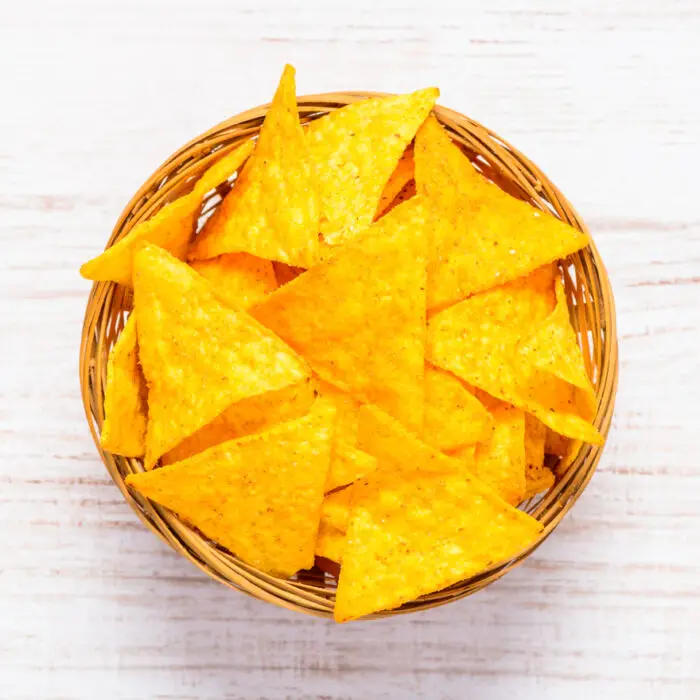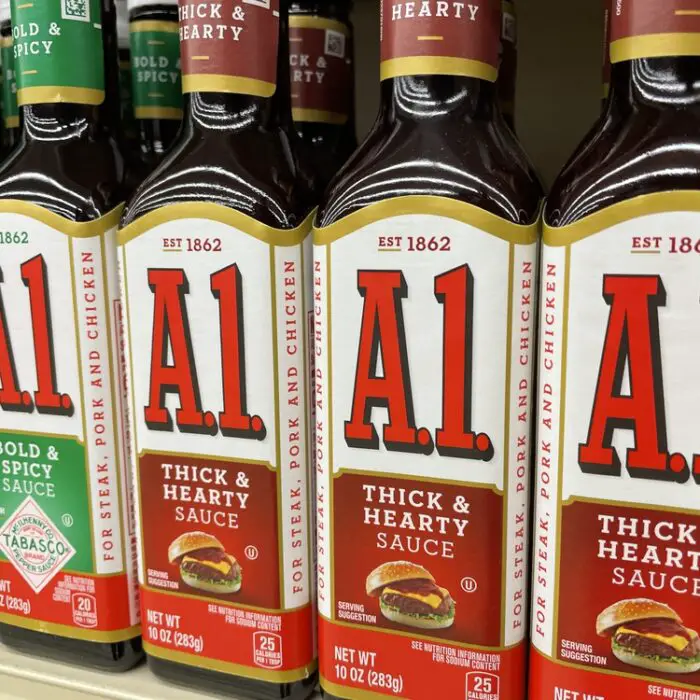Plant-based butter may have just as many calories as dairy butter, but it has less cholesterol, making it ideal for vegans or anyone wanting a lower-cholesterol alternative.
Even though the number of vegan products, including plant-based butter, has become more readily available, you may want to know how to make plant-based butter at home. Luckily, it’s a straightforward and rewarding process.
Simple Steps: Creating Plant-Based Butter

A handful of ingredients is all you need to make vegan butter at home. Here’s how to make plant-based butter, ensuring you always have it handy for your cooking and baking needs.
Ingredients
- 1 cup of refined coconut oil (it has a neutral flavor)
- ¼ cup plant-based milk (almond, soy, oat, etc.)
- 1/4 t. salt (adjust to taste or omit for unsalted butter)
- 1 t. of apple cider vinegar or lemon juice (optional for a tangy flavor)
- ¼ teaspoon of turmeric (optional for color)
Instructions
- Melt the refined coconut oil slowly in a saucepan over low heat until it becomes completely liquid. Don’t overheat it.
- Combine the melted coconut oil, plant-based milk, salt, apple cider vinegar or lemon juice, and turmeric in a blender or food processor. Blend until smooth and well combined.
- Pour the mixture into your mold or containers and refrigerate to solidify for at least 4 hours or until firm.
- If the butter is too firm after chilling, let it sit at room temperature for a few minutes to soften slightly. If it’s too soft, place it back in the refrigerator for a bit longer.
- It will keep in the refrigerator for up to two weeks, readily available for spreading, cooking, or baking.
Notes
- Customize the flavor of your plant-based butter by adding herbs, seasonings, or garlic to the mixture before blending.
- Try different plant-based milks to find the flavor and consistency you prefer.
Healthier Alternative: Plant-Based Butter Recipe
Why learn how to make plant-based butter if you can buy some? Well, the answer is simple. Firstly, if you live in a region or country where you cannot always find it in stores, you can make your own to use as a spread, in cooking or baking. Additionally, if you don’t like something in the ingredients in store-bought brands, making it at home ensures you have vegan butter in its purest form.
Finally, you may want to make your vegan butter at home because you love spending time creating in your kitchen. Whatever reason leads to making plant-based butter, here’s a delicious vegan butter recipe from Loving it Vegan that requires 5 minutes of prep time. You’ll need refined coconut oil, a neutral oil, apple cider vinegar, turmeric, salt, and nutritional yeast (added for a buttery flavor). You’ll love this creamy butter that you can use everywhere!
DIY Plant Butter: A Delicious Plant-Based Spread
Now that you have a better idea about making plant-based butter, maybe you want to make it extra creamy. One trick is to melt the coconut oil and whip all the ingredients with an electric whisk. Refrigerate it for 10 to 15 minutes, until slightly firmer, then whip it again for another two minutes until pale and fluffy. Refrigerate again. This process incorporates air into the vegan butter, giving you a spreadable and creamier result.
However, if you want an even creamier result, you will want to try this delicious variation from Kat, creator of The Loopy Whisk. The idea is to substitute coconut cream for 1/3 of the coconut oil for an extra creamy result and a richer flavor. Learning how to make plant-based butter is easy and fun!
From Scratch: Making Your Own Plant-Based Butter
If you worry about the ingredients in bought vegan butter, especially palm oil and other artificial additives, you’ll be happier to learn how to make plant-based butter at home.
A Virtual Vegan has developed a vegan butter recipe with hundreds of five-star reviews, and no wonder – including almond flour provides a mild, buttery flavor is a great idea. However, use almond flour and not almond meal. The difference is that almond meal contains whole and not blanched almonds, so it’s coarser and grainier, making your butter flecked with brown.
Easy and Tasty: Homemade Plant Butter Recipe

There’s an even plant-based butter recipe around that’s also ideal for anyone with allergies to nuts or soy. Learn how to make plant-based butter with coconut and olive oil that you can spread on toast or scones, bake with, or use for cooking.
The easy and tasty recipe for this homemade plant-butter comes from Amanda Orlando and her blog Everyday Allergen-Free:
Ingredients
- 1/3 cup melted coconut oil
- ¼ cup + 2 T. olive oil
- ½ t. sea salt
- 1 t. cider vinegar
- 2 t. cornstarch (you can also use another starch powder)
Instructions
- Melt the coconut oil in a cup by placing it in a warm water bath. It melts in a few minutes like this, but ensure it doesn’t get too hot.
- While the coconut oil is melting, blend the olive oil, sea salt, vinegar, and cornstarch until frothy and opaque.
- Add the melted coconut oil. Blend for another minute. The mixture will look frothy and pale.
- Pour it into a container, cover well, and refrigerate overnight.
Note: You can also sweeten this butter by adding one teaspoon of maple syrup if you want a little sweetness.
Vegan Delight: Crafting Plant-Based Butter at Home
As you can see, there’s no end to the ingredients you can use to make vegan butter at home. In this recipe on how to make plant-based butter, Sarah’s Vegan Kitchen adds cultured cashew cream or unsweetened vegan yogurt for a spreadable butter flavor that does not add greasiness to baked goods.
Lecithin granules act as an emulsifier (keep the ingredients together). If you aren’t using vegan yogurt, you can make the cashew cultured cream with boiled and blended cashews from the day before. Remember that you need clean vessels to ensure a proper fermentation process of the cashew cream. Once ready, the plant-based butter stays fresh in the refrigerator for up to two months if properly sealed. It also freezes well if you want to make a bigger batch.
Butter without Dairy: A Guide to Plant-Based Alternatives
Plant-based butter alternatives are a fantastic option for those looking to avoid dairy or reduce their consumption of animal products. They offer flavor and functionality similar to traditional butter while being entirely vegan. Here’s a guide to some popular plant-based butter alternatives:
Coconut Oil – This versatile option is an excellent butter substitute for recipes. It’s solid at room temperature and has a mild coconut flavor. It is unsuitable for some dishes but can complement certain flavors well. Refined coconut oil has a more subtle taste.
Avocado – Mash and use avocado as a spread or substitute for butter in baking. It’s rich in healthy fats and provides a creamy texture. However, it does have a distinct flavor, so it’s best suited for recipes where that flavor will complement the dish.
Nut Butter—Almond, cashew, or peanut butter can replace butter in some recipes. They add richness and flavor and bring their unique taste to the dish.
Olive Oil – As a staple oil for many, olive oil can be used to substitute butter in cooking and baking. It adds a distinct flavor to dishes.
Soy Butter – Made from soybean oil, soy butter has a creamy texture similar to dairy butter and is often used as a spread or in baking. It’s a good source of plant-based protein and is usually free from trans fats.
Sunflower Seed Butter – Sunflower seed butter is another option for those with nut allergies. Its flavor is mild with a creamy texture, making it suitable for spreading on toast or use in recipes.
Vegan Margarine – Many varieties of vegan margarine are available on the market. They usually contain a blend of vegetable oils. Look for options that are free from hydrogenated oils and have minimal additives.
Aquafaba—Aquafaba is the liquid from cooked chickpeas that whips up into a butter-like consistency. It’s often used in vegan baking recipes to add moisture and structure.
Store-Bought Plant-Based Butters – Many brands produce plant-based butter alternatives specifically formulated to mimic the taste and texture of dairy butter. Find brands like Violife, Earth Balance, Nutiva, Flora, and Mioko’s in sticks or tubs at grocery stores.
Creamy and Plant-Powered: Mastering Plant-Based Butter
Mastering the art of making plant-based butter involves understanding the ingredients and experimenting with flavors and textures. How to make plant-based butter also requires refining your technique. Here’s how to master the process for creamy plant-powered butter results:
Plant-Based Butter Ingredients
- Choose a neutral-flavored oil as your base. Refined coconut oil is popular because it solidifies at room temperature and has a creamy texture when chilled. Other options include refined oils like sunflower, safflower, or grapeseed oil.
- An emulsifier helps bind the ingredients together and creates a smooth texture. Plant-based milk or soy lecithin are commonly used emulsifiers in vegan butter recipes.
- Customize the flavor of your butter with ingredients like nutritional yeast, garlic powder, onion powder, lemon juice, apple cider vinegar, herbs, or spices.
- Salt enhances the butter’s flavor and balances the other ingredients’ sweetness.
Vegan Butter-Making Technique
- Start by melting your chosen base oil over low heat until it becomes completely liquid. Never overheat because it affects the texture of the final product.
- Blend or process the melted oil with your chosen emulsifier (such as plant-based milk) and any flavorings or seasonings. Blend until smooth and well combined.
- If the mixture is too thin, add more melted oil to thicken it. If it’s too thick, add more plant-based milk or water to thin it out.
- Pour the vegan butter mixture into a container or mold of your choice and refrigerate to solidify for at least 4 hours.
- Once the butter has solidified, it’s ready to use! Store it in the refrigerator for up to a few weeks.
Tips for Plant-Based Butter Success
- Experiment with flavor combinations to find your favorite, but keep notes of adjustments that work for you.
- Have fun and enjoy the creative process of making your creamy and wholesome plant-based butter!







